29 July
Four days since my last post, and again a lot has happened, so I don’t really know where to start. Emma has gotten her GoFlo casts by now, and also more than once! Surface levels of methane, continuously measured from the seawater intake to our lab, give us some data as we are approaching the station – but now we often see elevated levels, as we are back in the ice and the methane gets trapped under the ice cover. So it is still an exciting moment to see how it looks all the way down, and having some first speculations about sources for elevated levels if there are some. Within the main lab, most of us are sampling with the Niskin bottles, so there is ongoing comparison between the different measurements different groups are getting and how the pieces could fit together. My colleague Marc for example is doing online-measurements of the stable carbon isotopes of methane; this already gives me some ideas.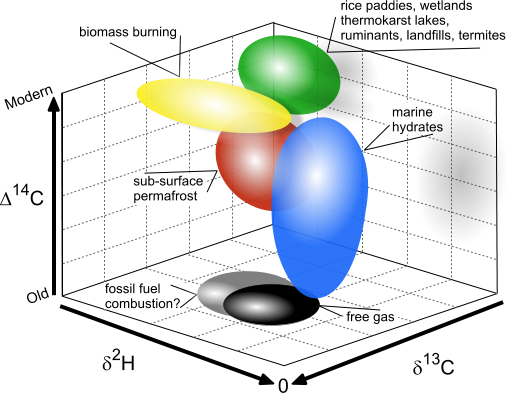 For solving the complete “puzzle” however, we need additional information so several of the relevant sources have similar δ13C- signatures, so we need the information from the other isotopes as well to get a better understanding. 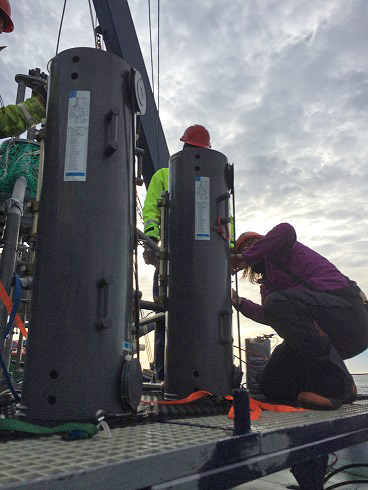 This picture also shows how important the information from the radiocarbon isotope is (Δ14C) is for the source apportionment. Just to remind you: This is what I take my GoFlo samples for. In the hotspot area we had no problem having a high enough methane concentration in the water to take a sample, but here it is a bit tricky – the levels are elevated, but not high enough to get enough Δ 14C-CH4 from one GoFlo cast. However, as we want to get a more representative understanding of the methane sources in the Arctic, we decided to not limit our sampling to the hotspot areas, but to take some larger samples. We work with two GoFlo bottles in parallel, and this morning we had quite a logistic challenge: we had to take 4 bottles to get enough methane, so we had to put one bottle in the water, get it up, quickly remove it from the winch wire, attach the other GoFlo bottle and let that down into the water while emptying the first one into the beerkegs, and take a small sample for a quick concentration analysis. The challenge today is also that the station is at 5 am, and the GoFlo cast happens in parallel to sampling from the CTD and the sediment cast. I am the methane-teamleader at this point, and the rest of my team is busy with sampling, and apart from my honorary team member Emma, nobody can be found in the vicinity of the main lab (people are either sleeping or sampling). In addition, the GoFlo bottles are not standing outside (ready to go), as in the last days, but have been moved to the storage yesterday because of the low temperatures (they make the outlet valves freeze). Emma and I, being “two strong Swedish women” manage to carry the bottles out, but then we need an extra person to watch the winch cable and the meter wheel. We call Igor, our chief scientist for the shift, to organize someone to help us, and he personally comes down, together with two other Russian colleagues. We start going, me driving the winch, communicating with the bridge and trying to tell everyone what to do and when. I am a bit nervous, it is the first time I do it on my own, usually my colleague and fellow team leader Henry is our main GoFlo person (like Emma, he thinks it is lot of fun, and is on the other hand having mixed feelings about operating my stripping boards, so we have managed to stick with our specialties for the last weeks.) But it goes really well, and Emma is an amazing help – not only because she is as strong as Pippi Longstocking, but also because she pushes our helpers into doing the right things, and because she realizes that I am a bit worried, so she is telling me in Swedish “you are doing fine, just relax”. When the third cast is on its way, I actually start enjoying myself... After the last cast it’s time for breakfast, and the end of my shift, so I leave the “sample stripping” to Henry, reversed roles for today 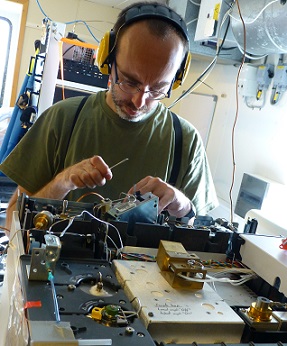 In theory, the last days could have been quite relaxed for our team – no “superstations”, and longer transit between the stations – on the one hand because they are further apart and on the other hand because there is ice, so we can’t move so quickly. But we really need the additional time: our instruments start reacting to the heavy workload of the last weeks. First, our gas chromatograph “Romeo” (that we use for measuring the methane concentration) breaks down – after a crazy 3-stations-day, just in the middle of the last intensive station, at the moment where we need our quick analysis. I manage to get the sample measured on our colleague Joanna’s GC – and this time, I am actually happy that the methane levels are not high enough for a GoFlo cast. Henry and I spend a sleepless night in the lab – him trying to fix our GC and me setting up an alternative measurement program on our colleague Joanna’s GC and getting the final data of the station measured In theory, the last days could have been quite relaxed for our team – no “superstations”, and longer transit between the stations – on the one hand because they are further apart and on the other hand because there is ice, so we can’t move so quickly. But we really need the additional time: our instruments start reacting to the heavy workload of the last weeks. First, our gas chromatograph “Romeo” (that we use for measuring the methane concentration) breaks down – after a crazy 3-stations-day, just in the middle of the last intensive station, at the moment where we need our quick analysis. I manage to get the sample measured on our colleague Joanna’s GC – and this time, I am actually happy that the methane levels are not high enough for a GoFlo cast. Henry and I spend a sleepless night in the lab – him trying to fix our GC and me setting up an alternative measurement program on our colleague Joanna’s GC and getting the final data of the station measured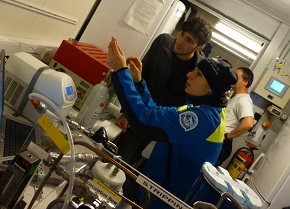 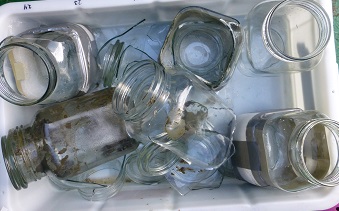 This was 2 days ago, we are still struggling with getting Romeo back to work – we quickly identified that the problem was due to salt from the seawater somewhere in the system, but it takes a bit longer to locate the exact location (the injector valve), and now we are trying to fix or bypass it. In the meantime, we try to measure our samples on Joanna’s GC – she is being really helpful and supportive, but of course we have to coordinate with her measurements, and also have to be extremely careful, as it is more sensitive to water than ours, so we have to heat it out quite often to get moisture out of the system. Other things also start to make trouble – seawater is also giving a hard time to the pump I use to evacuate my beerkegs, even if I have a water trap and a filter to protect it. Then we have a “lucky day” with a lot of broken glass: Two of my sample containers for sediments and a whole set of Marc’s water sample containers (the same type of glass jars) break on the same day – and as we unpack our backup jars, we discover that part of them hasn’t survived the trip from Tromsö. So, there is a lot of repairing to be done, so I am thankful for the slower pace and also for working on the night shift – things are usually a bit quieter and slower then, and I can catch up with fixing things, sorting the data, calibrate the instruments etc. The night is also now the best time of the day – in terms of light. We still have 24h daylight, and but the timezone of the “outside world” surrounding us is now very different from the ship’s UTC time, so we often have the most sunny time of the day in our night, i.e. during my shift. 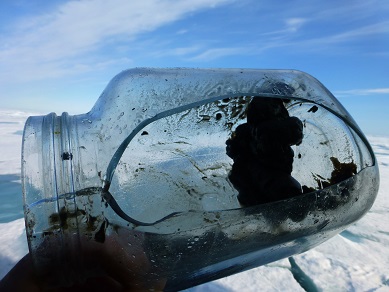 One more thing is worth mentioning from the last days is that we have seen land for the first time in a long while! We have been going on a large loop around Bennett Island, known for the “Bennett Island phenomen.” 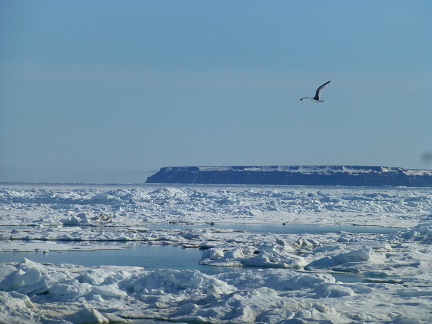 Large atmospheric plumes that have been observed emanating from that island and whose origin has been a mystery for a long time. We used the beautiful sunny day and existence of some landscape to take a group picture on the helicopter deck – in the middle of the day, so me and my team jump out of bed, get into our SWERUS jackets, try to look professional and awake for the picture and then fall back into bed again. |
| by Julia Steinbach |














